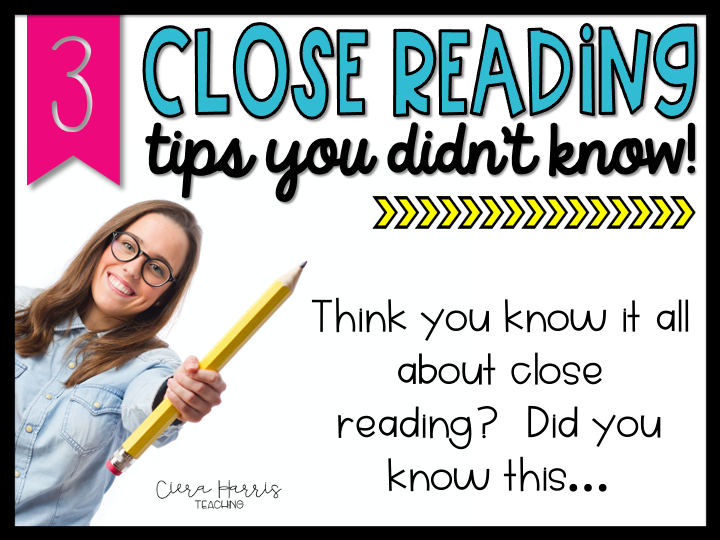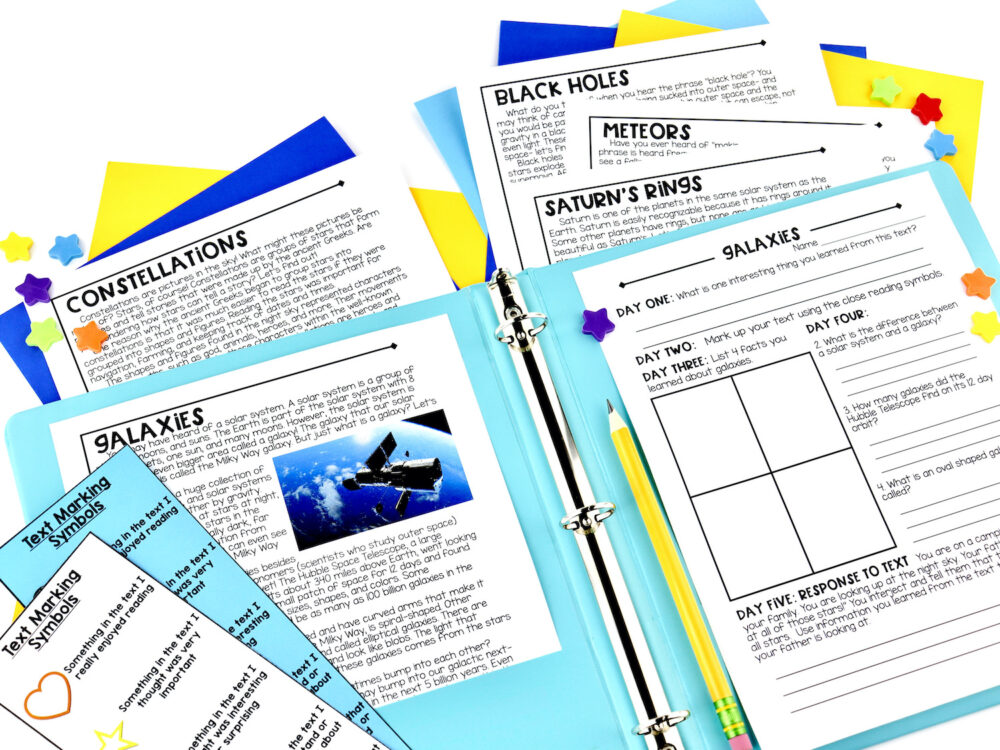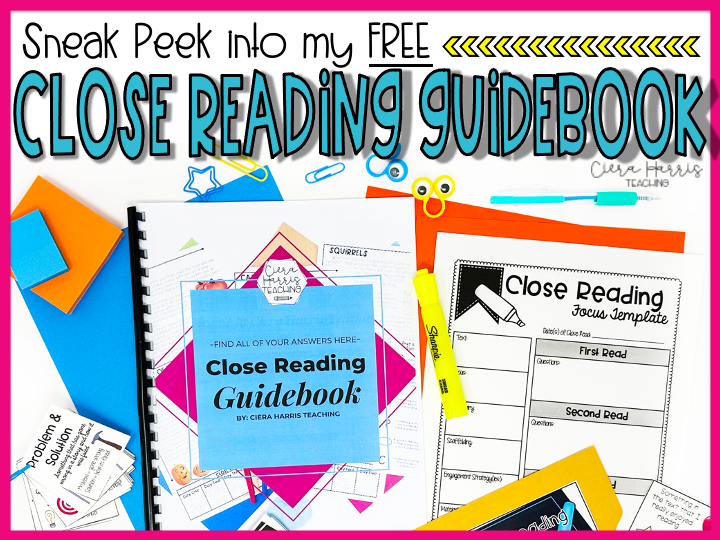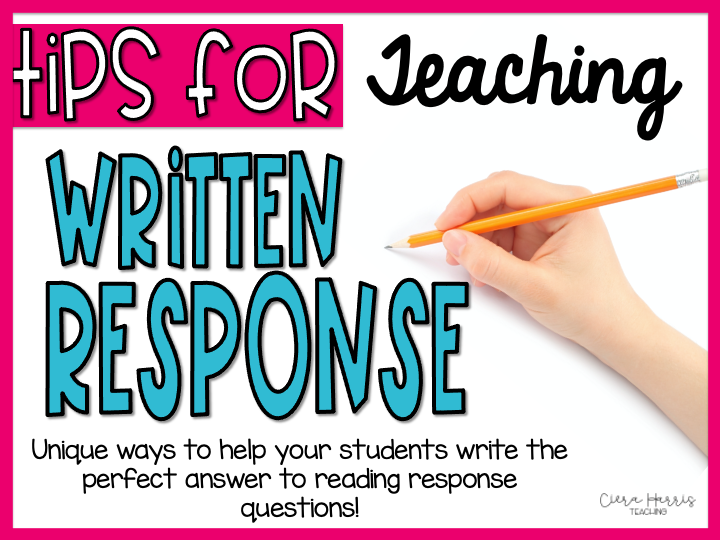Are you always trying to find new ways to build reading comprehension with your students? I’m sure you are! Teachers work so hard to ensure that students understand what they read. While looking at new strategies is great, a buzzword in education for the past few years can actually be what you’re looking for! This is close reading! Yes, I’m sure you’ve heard of close reading before, but maybe it hasn’t been impactful as you’ve hoped. Or, you’re unsure how to implement it in the classroom. Well, you’ve come to the right place! I have three incredible tips to ensure close reading success in the classroom.
Want to watch the video instead? Check it out below! Make sure to subscribe to get updates on all new content!
#1: Understanding and Purpose
The first tip is for students AND teachers! The first thing teachers need to do is to understand what the three reads are for and the purpose of each read. Essentially, this means you are not just re-reading to read. So, let’s dive in together and see what this means.
Close reading consists of three reads of the same passage with each focusing on the pillars of literacy. This includes key details and ideas, craft and structure, and integration of our knowledge and ideas. So, each one of the reads focuses on one of these pillars. As teachers, we must understand what it means to focus on key details and ideas in the first read. The same goes for the second read on craft and structure and the third on integrating knowledge.
Ultimately, it is vital to ensure the purpose of each read. Students also need to know this purpose since it will guide what they are specifically looking for while reading. For instance, this may be how certain paragraphs contribute to the overall meaning or making connections to life. Essentially, all three reads come together to improve reading comprehension and deepen thinking!
#2: Model Annotating
Teachers know the importance of modeling! This includes modeling how to write individual letters to solving complex math problems. Modeling is just so beneficial and vital for students!
When you read a professional development book, do you spend time highlighting essential concepts and jotting down quick notes? Many people do because this helps the important information stand out in our minds. Students need to do the same thing when reading a passage. To get started, this close reading tip actually begins with the second read. I call this Reading with a Pencil. While reading, students are now marking up the text in some way. This may be circling unknown words, writing a question mark next to something confusing, or highlighting an important detail. Really, there is no wrong or right way to annotate a text. Students all understand text in different ways. So, as long as students annotate to understand the text better, they are doing it correctly! Now, you can give them suggestions to start with but then let them go and annotate as they please. It is vital NOT to tell them they need to star this many things or why down this many questions. They need to annotate how it makes sense for their mind to absorb the material.
Get A Close Reading Clouds Everywhere Freebie!
I’m sure you’re sitting there thinking about how complex annotating can be. You’re right! It is not natural and just something students know how to do. It is often a new concept, and they need a lot of modeling, practice, and patience. So, don’t think you can just tell students to annotate a text after one or two lessons on it. They need A LOT of modeling to know how to do it and how there is no one set way. The Close Reading MEGA Bundle is an incredible way to provide consistency and ample annotation practice. There are engaging nonfiction passages over tons of topics.
#3: Not Everything Needs “Close Reading”
Your thinking may be bursting with ways to use close reading when school starts. It truly is remarkable to see students engage with the text. However, it is SO important to remember that not everything needs to be close read. When students work on close reading, it needs to be texts that are complex for them. Yes, this is technically different for every student. So, some students may close read a text while others do not. If the text isn’t complex, there is no reason to reread it.
When deciding which texts to close read, it is vital to get to know your students first. You need to know what kind of text will be complex for students. This means that you may have multiple versions of the same text if it is one that you really want students to close read. Make sure to be explicit about choosing text that you know will be challenging. Then, help them utilize the close reading process. Students who are not challenged will be bored and not understand how helpful annotating is.
Close reading is a fantastic way to break down complex texts while building comprehension. The three tips above will help students see how capable they are and how good it feels to never give up. Check out the Close Reading Video to learn more about how these tips can bring reading complex texts to the next level in your room! Luckily, the same process can happen with math. Since math can be overwhelming for students, explore how Close Reading in Math can excite and support your students.
I hope you found some new and unique ideas to help teach close reading to your students. If you want to save this post for later, make sure to pin the image below!









